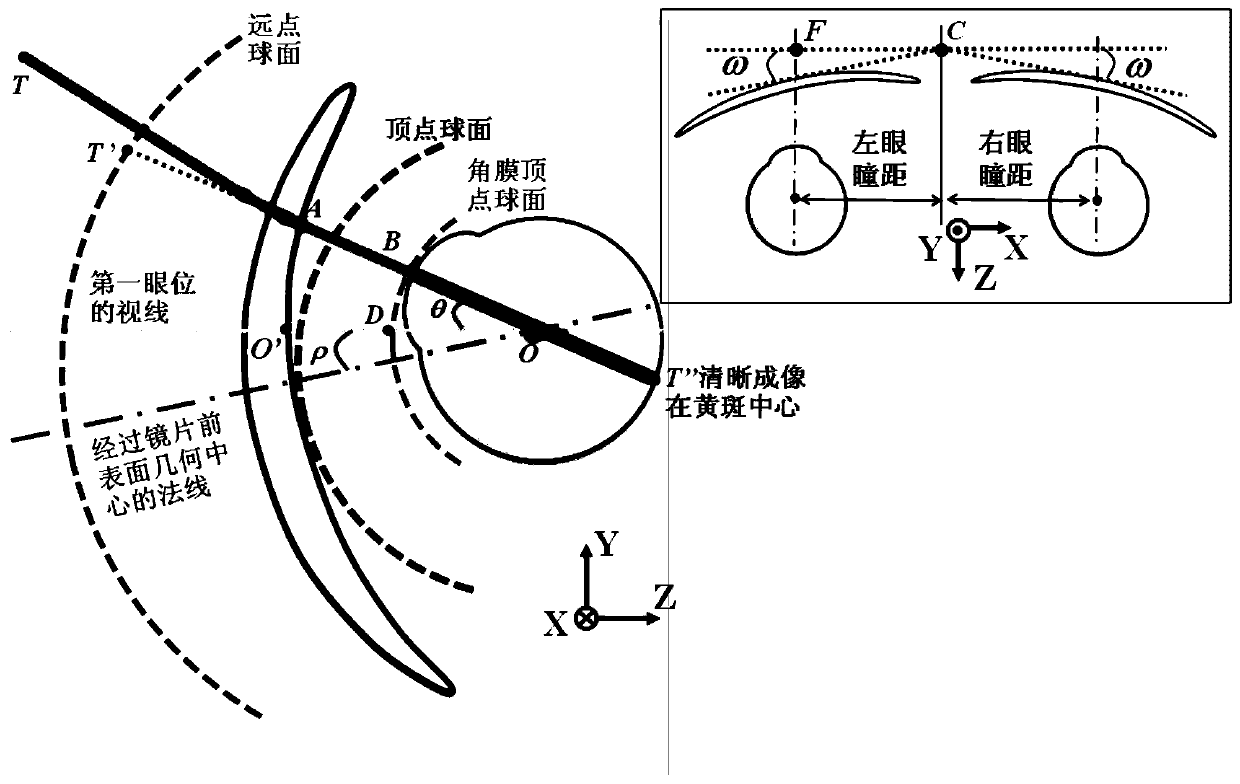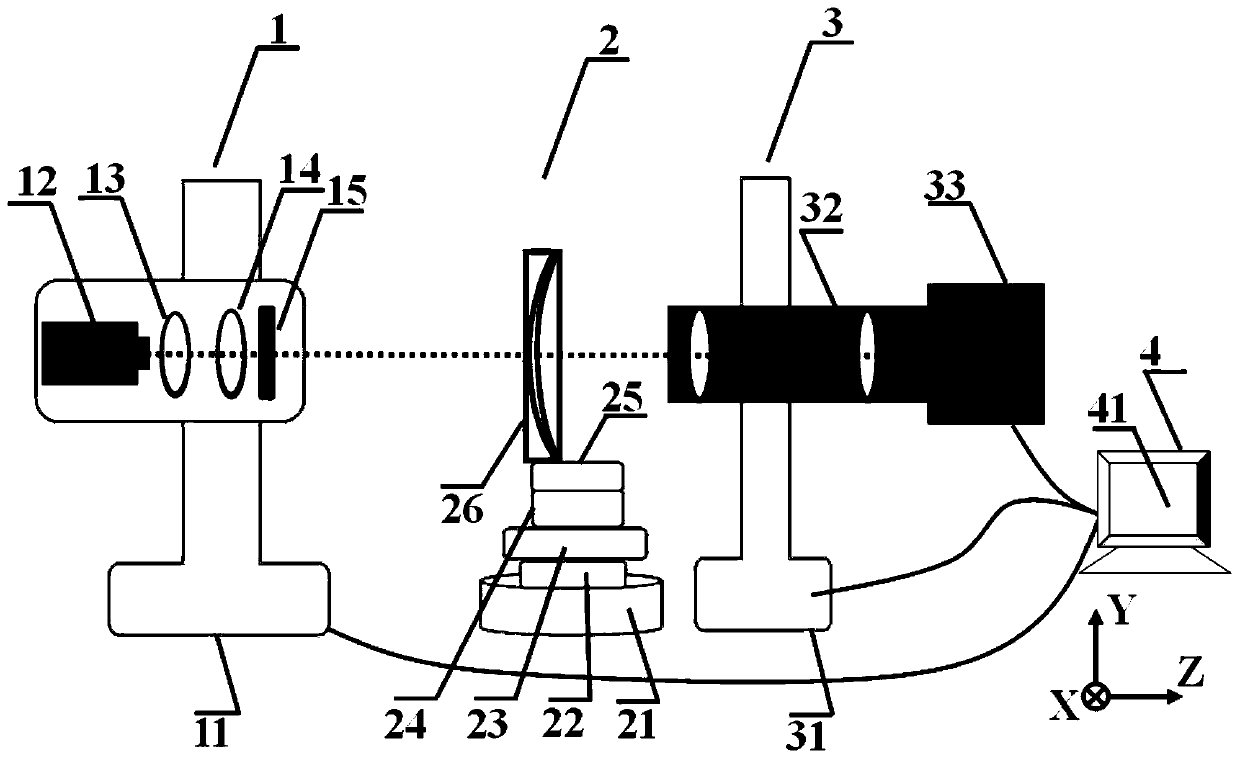A method and device for detecting ophthalmic lenses based on wavefront analysis
A detection method and technology of spectacle lenses, which are applied in the field of precision instruments, can solve problems such as inaccurate measurement, methods and detection devices to be discussed, positioning errors, etc.
- Summary
- Abstract
- Description
- Claims
- Application Information
AI Technical Summary
Problems solved by technology
Method used
Image
Examples
Embodiment Construction
[0050] The present invention will be described in detail below in conjunction with the accompanying drawings.
[0051] like figure 2 As shown, the present invention provides a spectacle lens detection device based on wavefront analysis, the light source adjustment unit 1 includes a four-axis motion platform 11, a light source 12, a beam expander 13, a collimator assembly 14 and a diaphragm 15; The four-axis motion platform 11 is composed of a rotating table 11a along the Rx axis, a rotating table 11b along the Ry axis, an X-axis displacement table 11c, and a Y-axis displacement table 11d. The four-axis motion platform 11 is provided with a light source 12 on the Ry-axis rotating table. , a beam expander 13, a collimator assembly 14 and a diaphragm 15; the lens attitude adjustment unit 2 includes a rotary table 21 along the Ry axis, and the rotary table 21 along the Ry axis is provided with a displacement table 22 along the X axis. The axial displacement platform 22 is provid...
PUM
 Login to View More
Login to View More Abstract
Description
Claims
Application Information
 Login to View More
Login to View More - R&D
- Intellectual Property
- Life Sciences
- Materials
- Tech Scout
- Unparalleled Data Quality
- Higher Quality Content
- 60% Fewer Hallucinations
Browse by: Latest US Patents, China's latest patents, Technical Efficacy Thesaurus, Application Domain, Technology Topic, Popular Technical Reports.
© 2025 PatSnap. All rights reserved.Legal|Privacy policy|Modern Slavery Act Transparency Statement|Sitemap|About US| Contact US: help@patsnap.com



